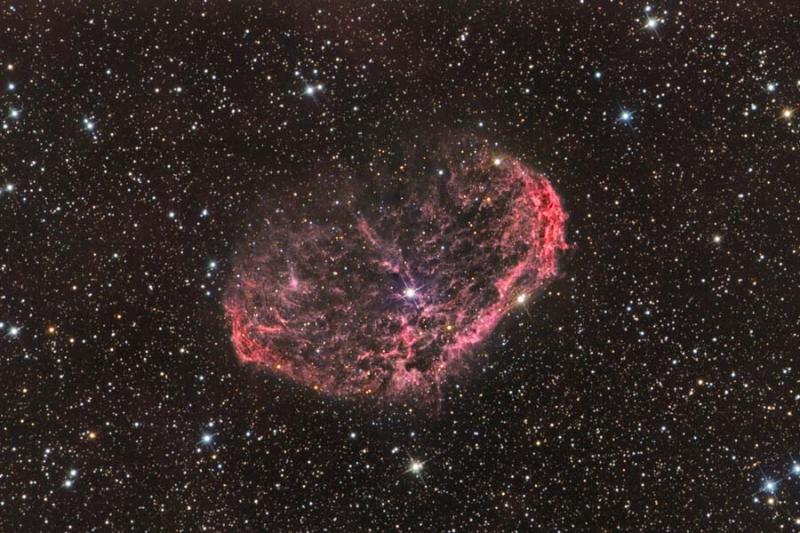
|
Credit & Copyright: Franck Bugnet
Explanation:
What caused the Crescent Nebula?
Looking like an emerging space
cocoon, the Crescent Nebula,
visible in the center of the
above image,
was created by the brightest star in its center.
A leading progenitor hypothesis has the
Crescent Nebula
beginning to form about 250,000 years ago.
At that time, the massive central star had evolved to become a
Wolf-Rayet star (WR 136),
shedding its outer envelope in a strong
stellar wind, ejecting the equivalent of our
Sun's mass every 10,000 years.
This wind impacted surrounding gas left over from a
previous phase, compacting it into a series of
complex shells, and lighting it up.
The Crescent Nebula, also known as NGC 6888, lies about 4,700
light-years away in the constellation of
Cygnus.
Star WR 136
will probably undergo a
supernova
explosion sometime in the next million years.
|
January February March April May June July August September October November December |
| ||||||||||||||||||||||||||||||||||||||||||||||||
NASA Web Site Statements, Warnings, and Disclaimers
NASA Official: Jay Norris. Specific rights apply.
A service of: LHEA at NASA / GSFC
& Michigan Tech. U.
Based on Astronomy Picture
Of the Day
Publications with keywords: NGC 6888 - Crescent Nebula - Wolf-Rayet star
Publications with words: NGC 6888 - Crescent Nebula - Wolf-Rayet star
See also:
- APOD: 2025 March 17 Á Thors Helmet
- APOD: 2025 February 3 Á Wolf Rayet Star 124: Stellar Wind Machine
- APOD: 2025 January 29 Á Dust Shells around WR 140 from Webb
- APOD: 2024 November 12 Á NGC 6888: The Crescent Nebula
- Sharpless 308: The Dolphin Head Nebula
- APOD: 2024 January 9 Á Thors Helmet
- APOD: 2023 September 4 Á Cygnus: Bubble and Crescent
